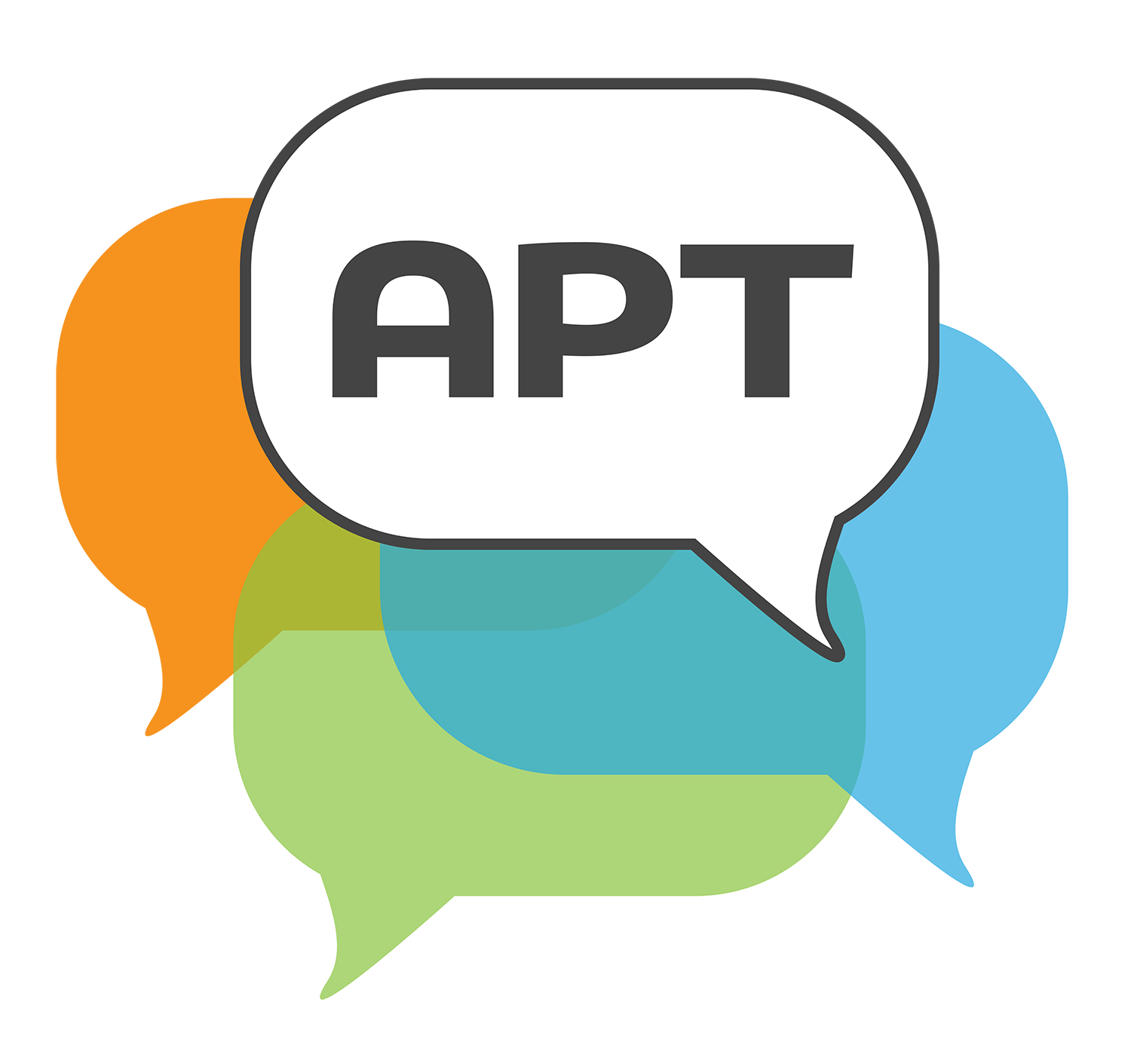How to use this website
Academically productive talk (APT) improves student learning and engagement. And yet, it remains rare both in U.S. classrooms and as a focus in teacher preparation programs. This website is intended as a resource for teachers and for those who support the development of teachers’ capacity to incorporate APT into their instruction.
The videos on this site are windows into authentic classrooms in which teachers are at various stages of learning to use APT as a pedagogical tool. While several of these videos feature teachers who have received training in APT,
the video library is not a showcase for high quality or exemplary practice only. Rather than serving as models, the videos are intended to provoke and support discussion about APT—with colleagues, in teacher pre-service education, or in professional development.
To support the use of these videos for discussion or analysis, researchers from the APT project team annotated each of the videos. These comments, too, should fuel discussion; they will reflect the aspects of APT that the particular researcher(s) consider most important, but in every case it is possible that users will want to amend or extend the researchers’ comments.
For specific suggestions on how to use these resources for your own purpose, click on the relevant role below:
Teacher Educators
The
Benefits of APT section presents the various ways APT can enhance instruction and benefit students. Teachers must appreciate the value of APT before they will be motivated to incorporate it into their practice. The video clips can be helpful in discussion; however the content or grade level used may be different from your intended focus. You can use the video library to find alternative clips.
The
Video Library offers a robust set of resources to enrich your course or PD program. Because these clips vary by grade level, content area, and experience with APT, they can serve a range of teaching purposes. On this site, we refrain from discussing areas in which a teacher’s practice needs strengthening. As an instructor, however, you can point out, or have your students/participants point out, areas for improvement.
The section on
Getting Started offers concrete suggestions for those who wish to begin incorporating APT into their (student) teaching. We believe all students/participants who are introducing APT into their practice should review this section carefully even if it’s not the focus of the course or professional development.
Descriptions of specific activities used by these teacher educators:
Shireen Al-Adeimi, Michigan State University, College of Education

Videos were used in multiple sections of an advanced methods class in a teacher preparation program, where pre-service teachers learned about literacy practices for diverse learners. As this course focused on literacy in grades 3-6, videos from these grades were used as examples of how teachers might engage their students in discussions across different content areas. After weeks of learning about literacy practices, with a particular focus on dialogic practices for two weeks, pre-service teachers prepared their own dialogic lesson at the end of the semester. To prepare for their own small-group dialogic, text-based discussions in their school placements, text-based discussions on the APT website were viewed and discussed in class. These helped pre-service teachers prepare for better-quality, dynamic discussions, and the various ways in-service teachers navigated and responded to students’ talk.
The videos will also be used in an upcoming doctoral seminar on classroom discourse, where doctoral students in Teacher Education will learn about translating dialogic theories into practice; understand and practice various ways of measuring elements of academically productive talk; and analyze how teachers’ facilitation and questions supported students’ academically productive talk and learning.
Abby Reisman, University of Pennsylvania Graduate School of Education

Videos from the APT video library were used in a seminar for masters and doctoral students on classroom discourse. The course was organized into three sections and APT videos played an integral role in the first two sections.
In the first section, students explored philosophical arguments for the humanistic and democratic promise of discussion and viewed videos (e.g., Comparing Political Revolutions) to discuss the extent to which the humanistic and democratic potential of discussion was being realized. Students also grappled with arguments for and against the establishment of norms and ground rules and watched several videos to discuss whether norms assisted or limited student discourse (e.g., Understanding Sleep and Simplifying Logarithms at the bottom of the Community Agreements page in the Getting Started section).
The second section of the course explored the potential benefits of classroom discourse in student learning and development. For example, students discussed how discussion can support the development of argumentation and reasoning skills and then watched Is a seed alive? for evidence of student argumentation in discussion. They explored discussion as a means of literacy development and watched the RMS Titanic video and Song of Myself video to develop or reject claims that discussion deepens textual interpretation.They explored the relationship between classroom discourse and content learning and then watched How do Hotpacks Release Heat and John Brown and the Raid of Harper’s Ferry to discuss the role of teacher facilitation in content learning.
Finally they explored how discourse can develop students’ agency and identity, and returned to the Comparing Political Revolutions video with this lens in mind. The final section of the course explored the various challenges – political and pedagogical– that teachers encounter as they attempt to foster open classroom discourse. Although we did not use the video library for this section of the course, the videos could be used to spark discussion about how contemporary politics contribute to a climate of fear and apprehension regarding classroom discourse.
Catherine Snow, Harvard Graduate School of Education
 Download Syllabus
Download SyllabusIn three different versions of an introductory course for master’s/doctoral students on classroom discourse, videos were used in a variety of ways. We started with a ‘cold viewing’ of a shared video, to generate ideas about what to look for and how to formulate our observations in appropriate ways. The course then offered students opportunities to read articles about a few different approaches to coding classroom video (Accountable Talk, Collaborative Reasoning, Dialogic Teaching, Quality Talk), and then to delve deeper into these approaches by applying the coding categories associated with them to videos of their choice. Finally, students were tasked to produce an independent or small-group research study, again focusing on an age-range and content area of interest to them. While they were not limited to using the video library for this purpose, most of them did take advantage of it and found it greatly facilitated the work by enabling them to view videos in order to generate ideas and then also because of the access provided to a range of analyzable material.
Classroom Teachers
If you are a teacher working independently or with other teachers to introduce or strengthen APT in your classroom, you will need to plan how to use the site. There is no single best approach, but these are some things to consider:
- We recommend you start by reviewing the section on the
Benefits of APT. This section has videos from different content areas and grade levels because the benefits of APT cross grades and content areas. Spending time with the videos in this section will deepen your appreciation of the ways in which the practice will benefit your students.
- The
Getting Started section provides straightforward guidance, and will be especially helpful if the practice is new to you. Incorporating APT into your instruction can be done with relatively simple steps, but getting students to engage productively in discourse is anything but simple! Even if you are already using APT, you may find this section helpful. Note that there is an
APT Teacher Tip Deck, with specific instructional moves for incorporating APT. Many teachers find these tips helpful.
- For teachers who teach specific content areas, the section APT
Across Content Areas goes deeper into discussion in your specific subject and is likely to be helpful, particularly for secondary teachers.
- The amount of time you spend reviewing clips from the
Video Library is purely a question of how interested you are in exploring further. The clips the APT team considered most helpful are also incorporated elsewhere in the site. You can also look at the expert commentary on the videos to see if observations of the APT team align with yours.
Some teachers have been successful at jump-starting discussion by
showing their students video of other students in a similar grade engaging in discussion, and then having the students critique the video. This can help students become comfortable with what it looks like to engage in discussion, making it easier for them to get started themselves.
District or School-based Coaches
The site offers many resources to support instructional coaches, even if teachers do not visit the site themselves.
- We suggest that you start with the
Benefits of APT section to explore the varied purposes that APT can serve. Calling out these different purposes can be helpful because what constitutes quality will vary depending on the purpose. But many teachers are not aware of the distinctions. For example, sometimes a teacher’s goal is to create a sense of community, and every member of the group having a turn to talk is essential. But if the goal is to build argumentation skills, then it is beneficial to give an individual student who has had their argument challenged a chance to rebut, even if they have already spoken. There may be annotated videos in this section that you find particularly helpful to discuss with your teachers in order to develop their understanding of the different purposes of APT. Videos serve as a common referent that anchor discussions with teachers.
- The
Getting Started section may be particularly useful for coaching. You can assess which of these considerations and practices teachers have mastered and where they need additional support.
- If you coach a particular content area, we suggest you spend time in the section that explores APT
Across Content Areas. Content area teachers will likely find these videos most relevant.
- The
Video Library can be a helpful tool for leading meetings with teachers you work with. You may wish to watch videos together and collaboratively discuss elements of APT you see in them. It’s important to think carefully about the clips you use, and the lessons teachers may draw from them because not all clips show instruction that is high quality in all respects. The videos can be used to center discussions on how to improve instances of APT. Expert commentary on the videos can shed light on particular aspects that are noteworthy.
The APT website was used as part of Christine Dahnke'sTalk is Literacy presentation to school and district leaders. Her focuses here is on literacy and English learners.
Principals
Whether you lead an elementary or secondary school, the APT website can be a resource for your teachers’ development. We recommend teachers have the opportunity to discuss the resources in teams. Teacher team meetings are always most helpful when they are well facilitated, so the most important user of the site is likely to be your coach or teacher leader, who may use it to frame a professional learning agenda on developing APT schoolwide. Team meetings are a perfect setting for viewing a video together and discussing the aspects of APT that teachers notice. You may wish to use the guiding questions for viewing videos for the video library, as well as the expert commentary, to help your instructional leaders hone their APT facilitation and coaching skills.
University Researchers
This site is primarily for practitioners and teacher educators. For research purposes, there is a companion TalkBank site that allows you to compare instruments from this project for examining classroom talk. See guidance for using
TalkBank.
State Level Education Policy Makers
APT is a powerful tool in any teacher’s instructional repertoire. But it is used far less commonly than its benefits warrant. You may wish to promote APT in your state by sharing this resource with county offices of education and teacher preparation programs. This site can also serve as a tool for you to promote APT in both preservice and inservice programs, as teacher training programs place insufficient emphasis on APT. We hope the site provides much-needed concrete examples of how APT looks and sounds in the classroom.


